Affiliate links on Android Authority may earn us a commission. Learn more.
All the big iOS 15 and iPadOS 15 announcements and how they compare to Android

Apple today announced iOS 15 and iPadOS 15, updates to its core operating system that provide iPhone and iPad owners with even more control over their information and privacy. Here’s an overview of all the new features and how they compare to features in Android.
Related: iPhone 12 buyer’s guide: Everything you need to know
iOS 15
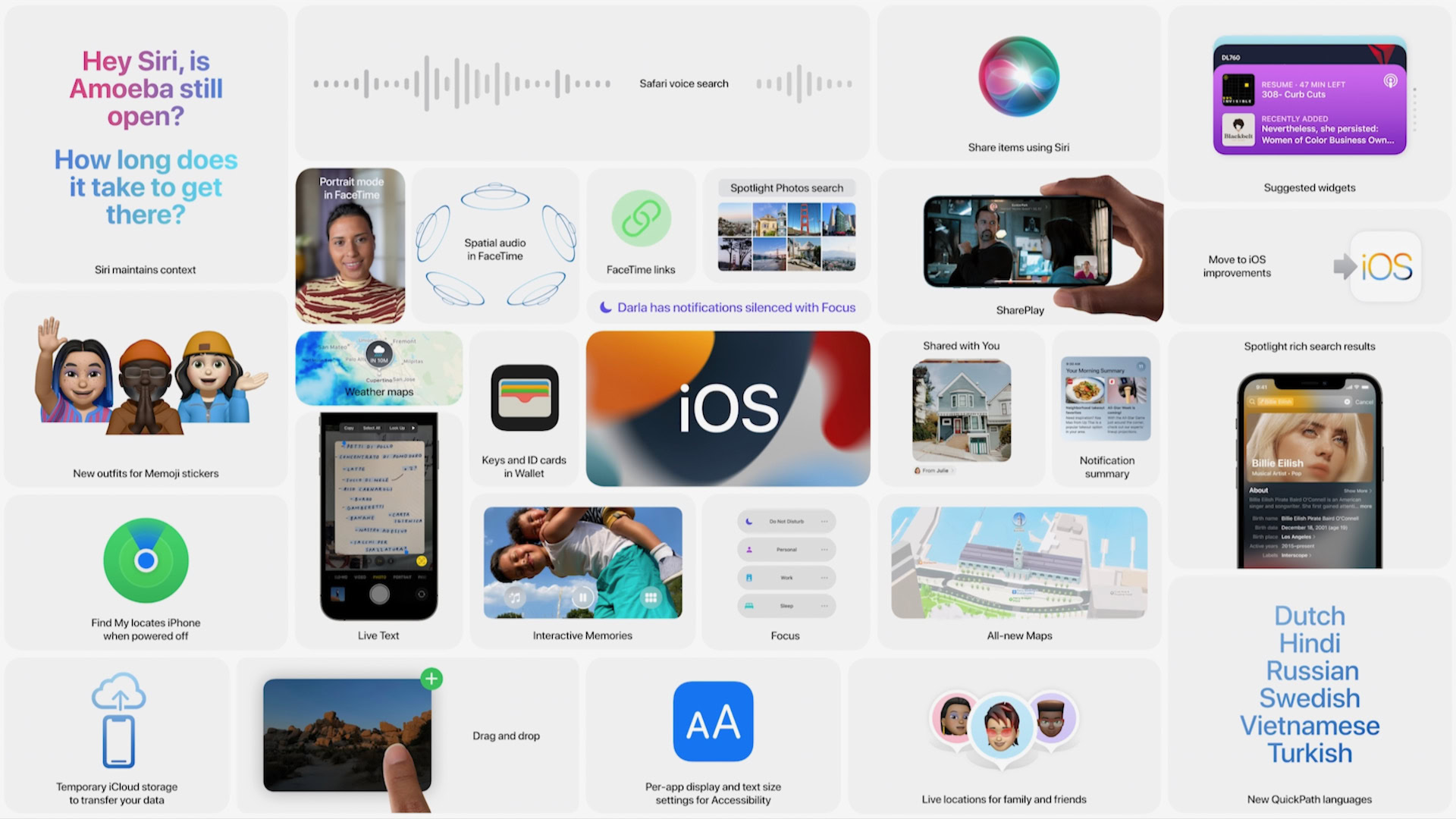
Here are all the new things revealed in iOS 15 for iPhones and iPads, some of which mirror things we’ve seen in Android.
FaceTime
Spatial Audio: FaceTime is how iOS users catch up with friends around the world via video chats. This year, Apple set out to make FaceTime feel more natural and life-like. For example, Spatial Audio. With Spatial Audio, FaceTime users will sound like they are sitting in the same room as those with whom they are speaking. Friends’ voices are spread out across a space to give each voice more identity.
Mic enhancements: Apple tweaked how it handles microphones with machine learning. It can distinguish sounds, block ambient noise, and even prioritize the speaker’s voice to focus on one person. Conversely, iOS 15 supports Wide Spectrum, meaning the mic picks up an entire room’s worth of sound.
Video: Apple is bringing a grid view to see group FaceTime calls more clearly. Same-sized tiles with the speaker highlighted make it easier to see people. Portrait Mode blurs the background and puts the focus on the person in the video. This is a feature that’s already available to Google Meet users.
FaceTime links: iOS 15 lets people easily generate links for FaceTime calls and share them anywhere across platforms. FaceTime links can be sent in calendar, messages, WhatsApp, and other apps. Android users can even call into FaceTime from the browser. That’s a new and welcome feature.
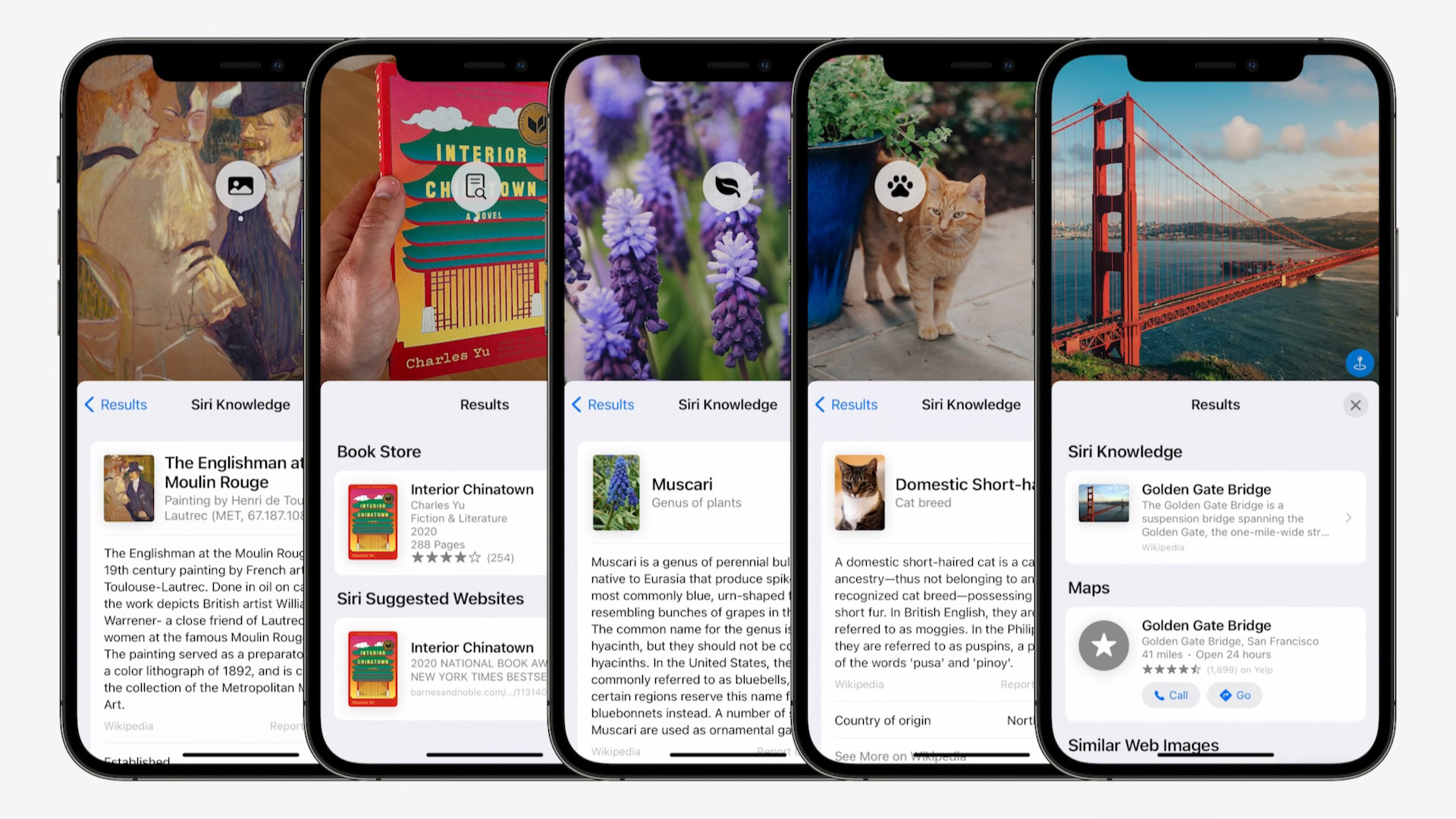
SharePlay: This is a big one. With the SharePlay API, iOS 15 users will be able to listen together, watch together, and share their screens via FaceTime calls. Everyone on a call can add songs to a shared queue, for example. Or people can watch YouTube videos or Apple TV content together on FaceTime. The API means third-party apps can support this, too, and some early adopters include Disney Plus, Hulu, ESPN Plus, HBO Max, Twitch, and TikTok.
iMessage
SharePlay makes an appearance here, too, allowing you to interact with content in new ways.
Photos: In iMessage on iOS 15, photo collages and stacks are richly detailed and interactive. Users can swipe through them, for example. Photos shared with you will automatically populate the Photos app under their own tab and blend in with events in your own library. There’s still no iMessage support for Android, unfortunately.
News: News items are often shared when people are not ready to consume them. The News app now has a “shared with you” function that highlights stuff shared in iMessage. After reading the articles, you can easily pick up the conversation from within the third-party app and iMessage.
Notifications
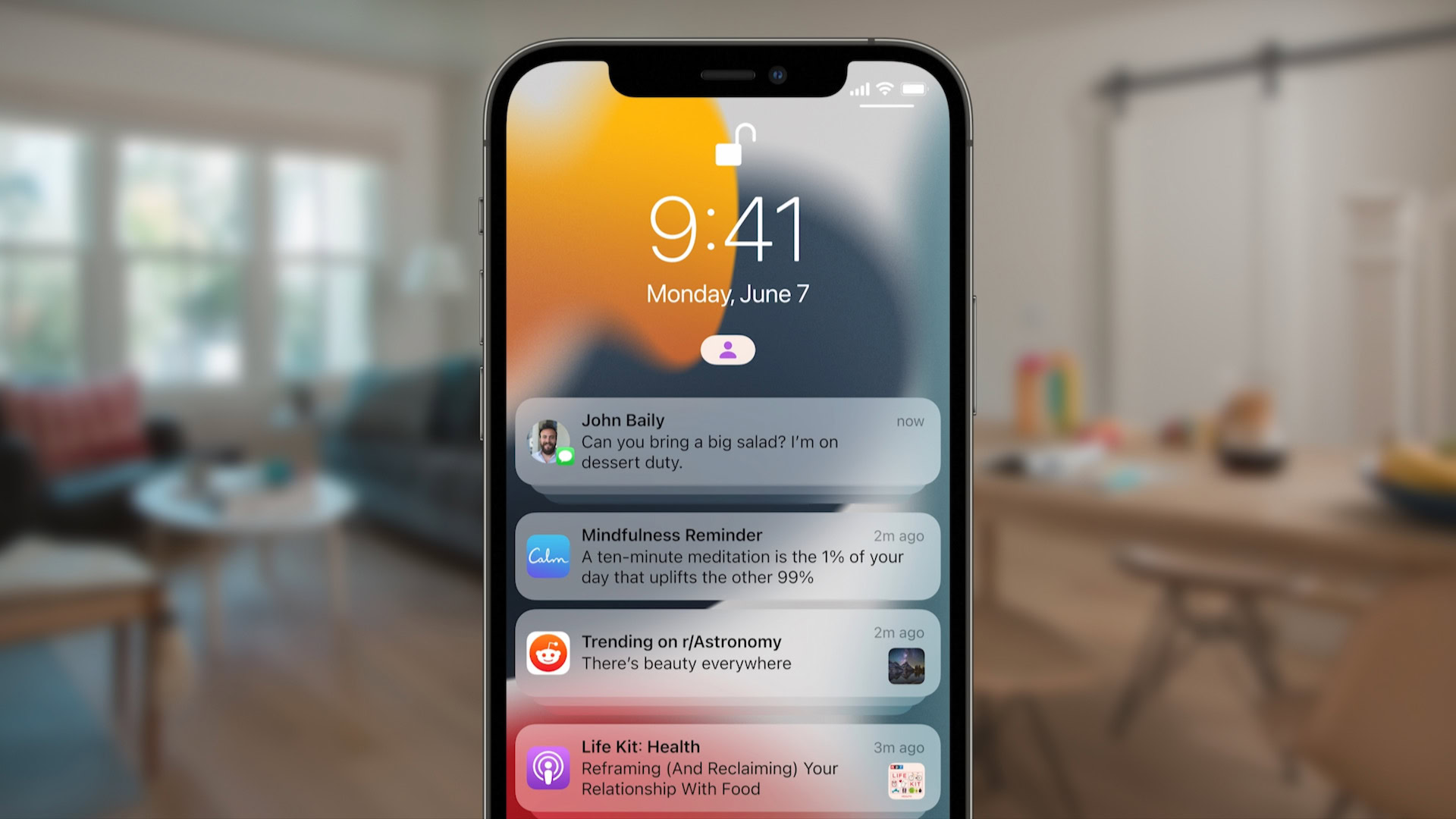
Notifications have been overhauled: There’s now a notification summary, which is a helpful collection of notifications that you can have scheduled to arrive any time you choose. They are ordered by priority. Important notifications rise to the top. Notifications from people don’t fall into the summary and always have priority. They can also be paused with Do Not Disturb. The idea is to reduce distractions from others and draw boundaries. Of course, Google recently updated notifications in Android 12, which you can read more about below.
Don’t miss: All the Android 12 features confirmed and rumored so far
Focus: This is meant to match the device to the owner’s current mindset. Whether it’s personal, work, sleep, or Do Not Disturb, Focus will intelligently suggest Focus based on context. Focus applies across devices, including the iPad, Mac, and Apple Watch.
Photos
Live Text: In Photos, you can now point the camera at a whiteboard or other content source, capture the text, and automatically convert it to copyable text in iOS. You can capture the text, drag and copy it into emails or other apps. This works with the live camera as well as all the photos stored in the Photos app. You can always look up details, recognize numbers, and apply these changes to screenshots, quick looks, and even photos on the web. If this sounds familiar to you, you’re right on the money. Google has offered this type of feature to Android users for years through Google Lens.
Spotlight: Spotlight now be used with photos and text found in photos. Spotlight features all-new rich results for contacts. You can easily call, FaceTime, or message them, or see where they are if their location is shared, see recent interactions, shared photos, files, calendar notes, etc.
Photo Memories: Memories intelligently curates favorite moments into movies. You can tap on memories, see animated title cards, and see relevant songs from Apple Music that brings the moment to life. New memories are built on the fly and paced to the beat of the music. Users can customize memories with memory mixes. Each photo is analyzed and matched with color and contrast. You can tap on music suggestions and tweak them as desired. This is another feature that Google Photos has been offering for some time.
Wallet
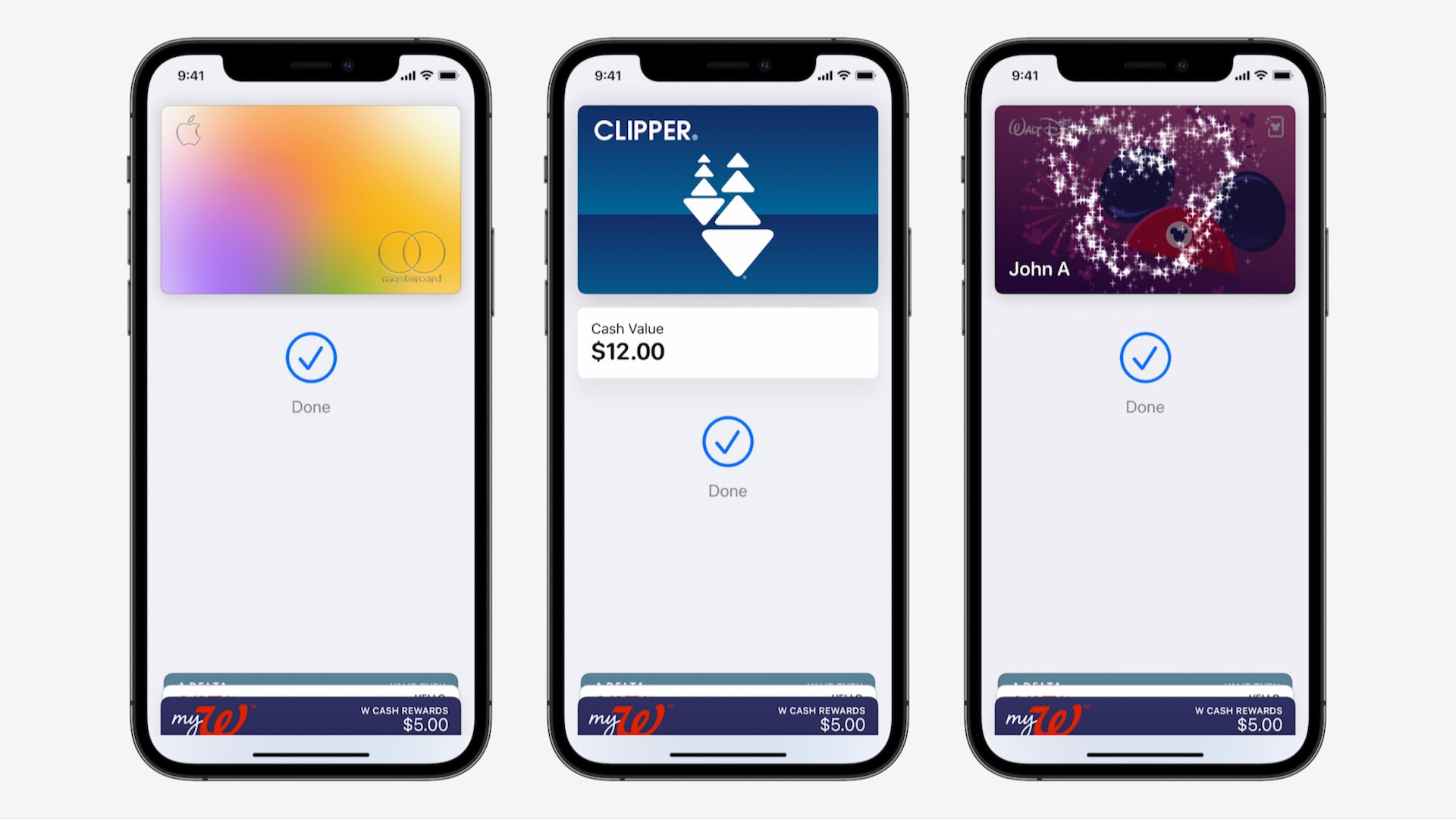
Ultra-wideband: New support for UWB is on board. Apple Pay has already eliminated the need for payment and transit cards, as well as cards to get into Disney World. With iOS 15, Apple is working to improve on car keys with UWB starting later this year, so iPhone owners can unlock their cars. BMW will be first. And don’t forget hotels. Starting this July, Hyatt will build this out to 1,000 properties worldwide. Just tap to unlock. Loads of places signing up for support keys.
Identity cards: Your driver’s license is coming to Apple Wallet in iOS 15. Scan your driver’s license in participating states, and your ID details are now in Wallet. Details are stored in the secure element, meaning it is private and secure. TSA is working to bring digital ID support to airports. With just a tap of your iPhone, you’ll be able to get through security. Google hasn’t gone this far with its own Google Pay service.
Weather
Apple Weather is getting a huge visual update in iOS 15. It has “a beautiful new design,” says Apple. It will feature layouts that change based on conditions, such as wind, storms, and sunlight. Apple says there are now thousands of variations that reflect the sun position, precipitation, and more. iPhone owners will also be able to see full-screen weather maps.
Maps
More places: Apple is extending the new Apple Maps to Spain, Portugal, Italy, and Australia.
Cities: Apple says it is taking cities to an entirely new level. In iOS 15, Maps will offer more detail of commercial districts, elevation, road colors, and labels, custom landmarks, and more. It should make exploring cities more fun. There are new road details to help drivers better see and understand important things such as turn lanes, bus, and taxi lanes, bike lanes, crosswalks, and more. This data will come to CarPlay later this year.
Transit: There are also big improvements for transit riders. Favorite lines can be pinned to the top, and transit can help you with timing your exit from trains. Maps will generate position-based landmarks so you can get your bearings once you leave a station. Google Maps has long excelled at transit directions, so these are certainly catch-up features for Apple Maps.
AirPods
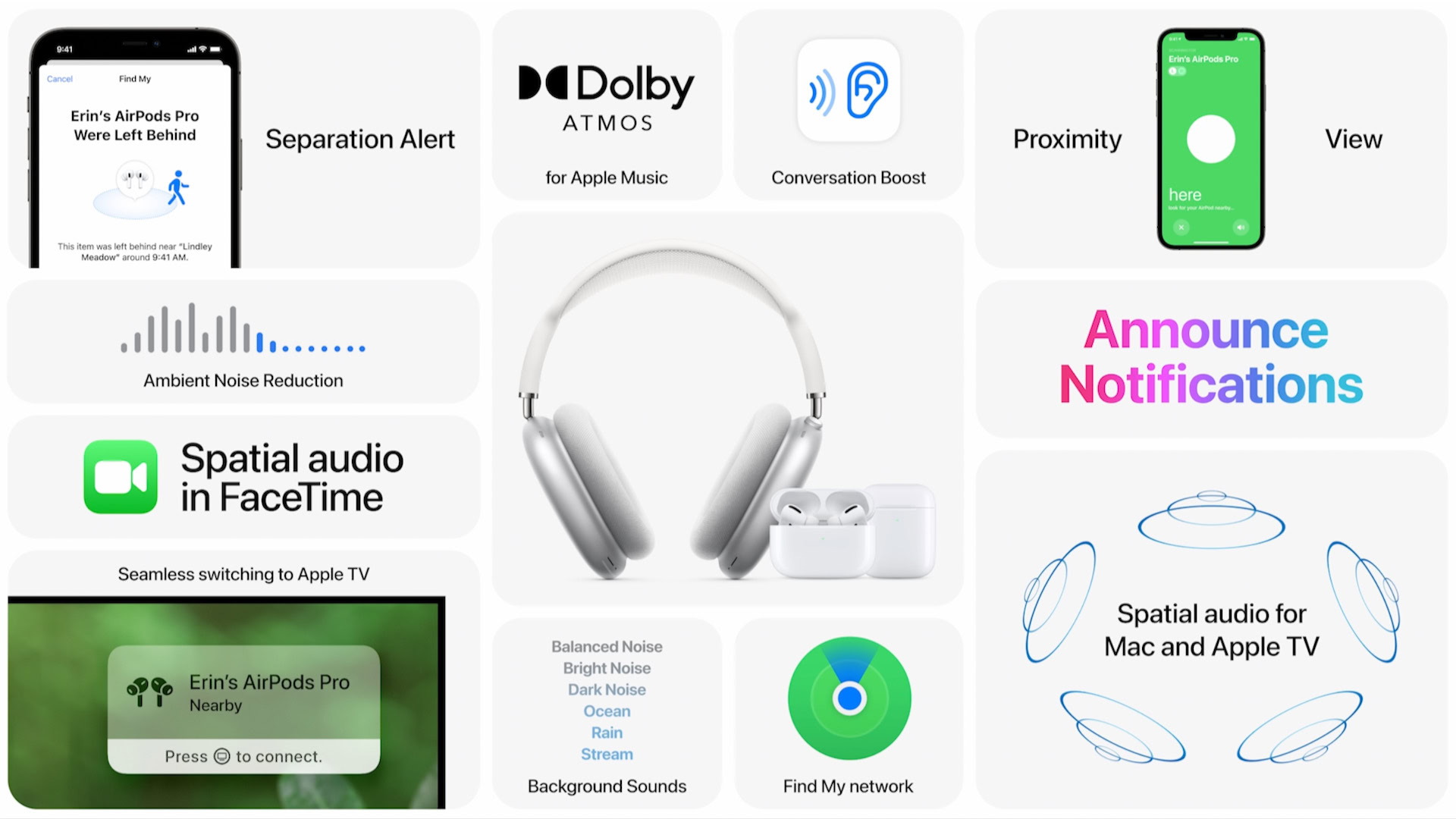
Conversation boost: This is meant to help people with mild hearing difficulties focus on the person speaking in front of them. It can help to reduce ambient noise for better clarity.
Siri: Siri can now read notifications to AirPod wearers. Moreover, when you set a Siri reminder, it will speak to you via your AirPods. Again, Google Assistant has been able to do this for years.
Find My: New tools are coming to AirPod owners via the Find My app. Apple says there will be new ways to see and locate lost AirPods, have them make alert noises, and even receive separation alerts when an AirPod is left behind.
Spatial Audio: Spatial Audio is extending to tvOS and AirPods. It’s also coming to M1-powered Macs for head placement. Dolby Atmos available starting today in Apple Music via Apple AirPods.
iPadOS
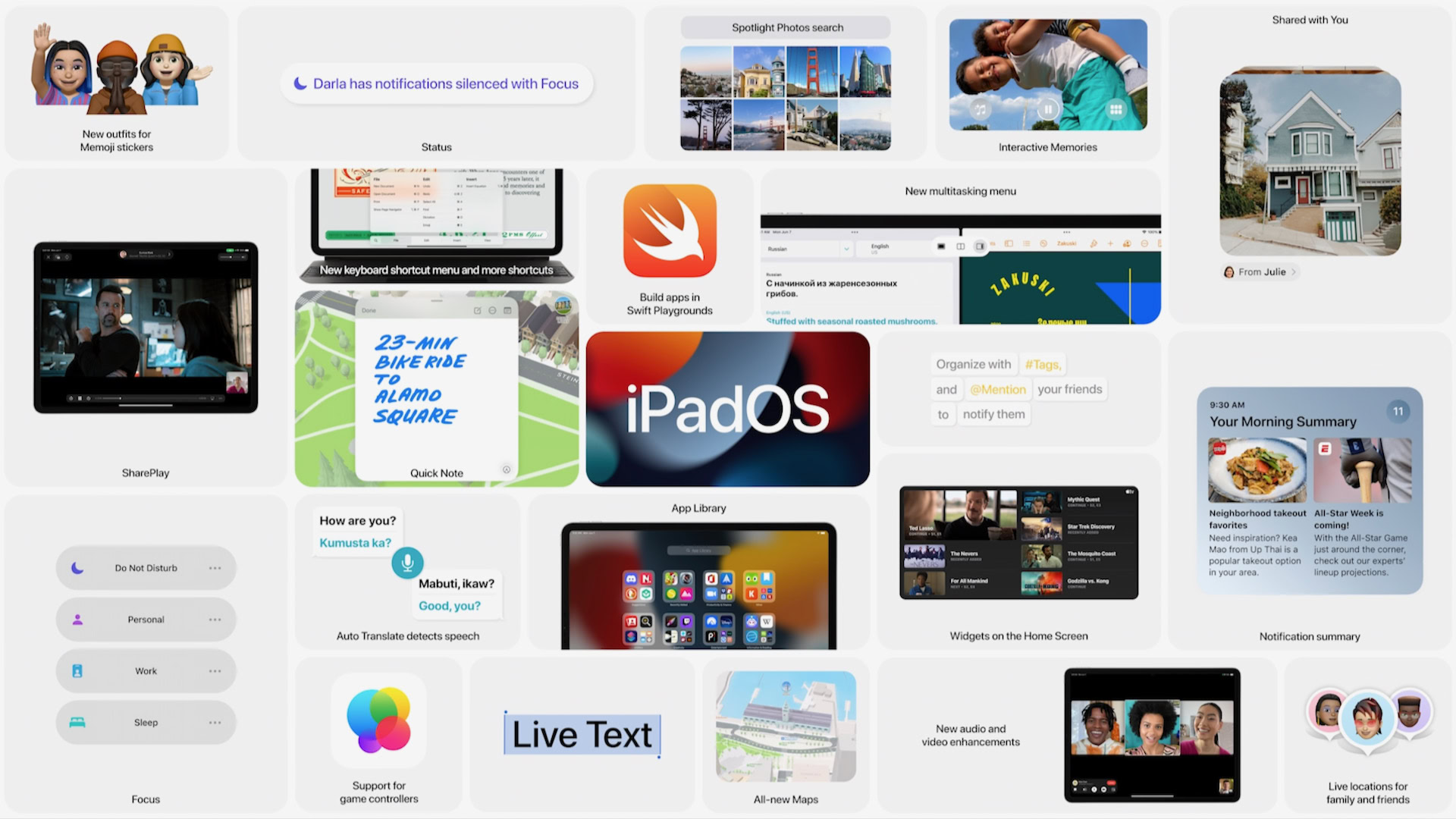
Many of the above features are headed to iPadOS, too, but iPadOS gets its own features as well.
Widgets: iOS widgets are coming to the iPad home screen. Before, they were limited to the trending section. Widgets can now be placed anywhere on your home screens to give you more control over where content is visible and consumable. Apple is adding a new larger format for widgets that’s just for the iPad. We all know that Android has done widgets since Day One. That includes Android tablets. Apple is playing catch-up big time here.
App Library: The App Library, essentially an Android app drawer, is coming to the iPad. This puts all the extra apps into themed folders. App Library is available from the dock and allows you to move around and even hide Home Screens. This is another feature that Android has offered forever.
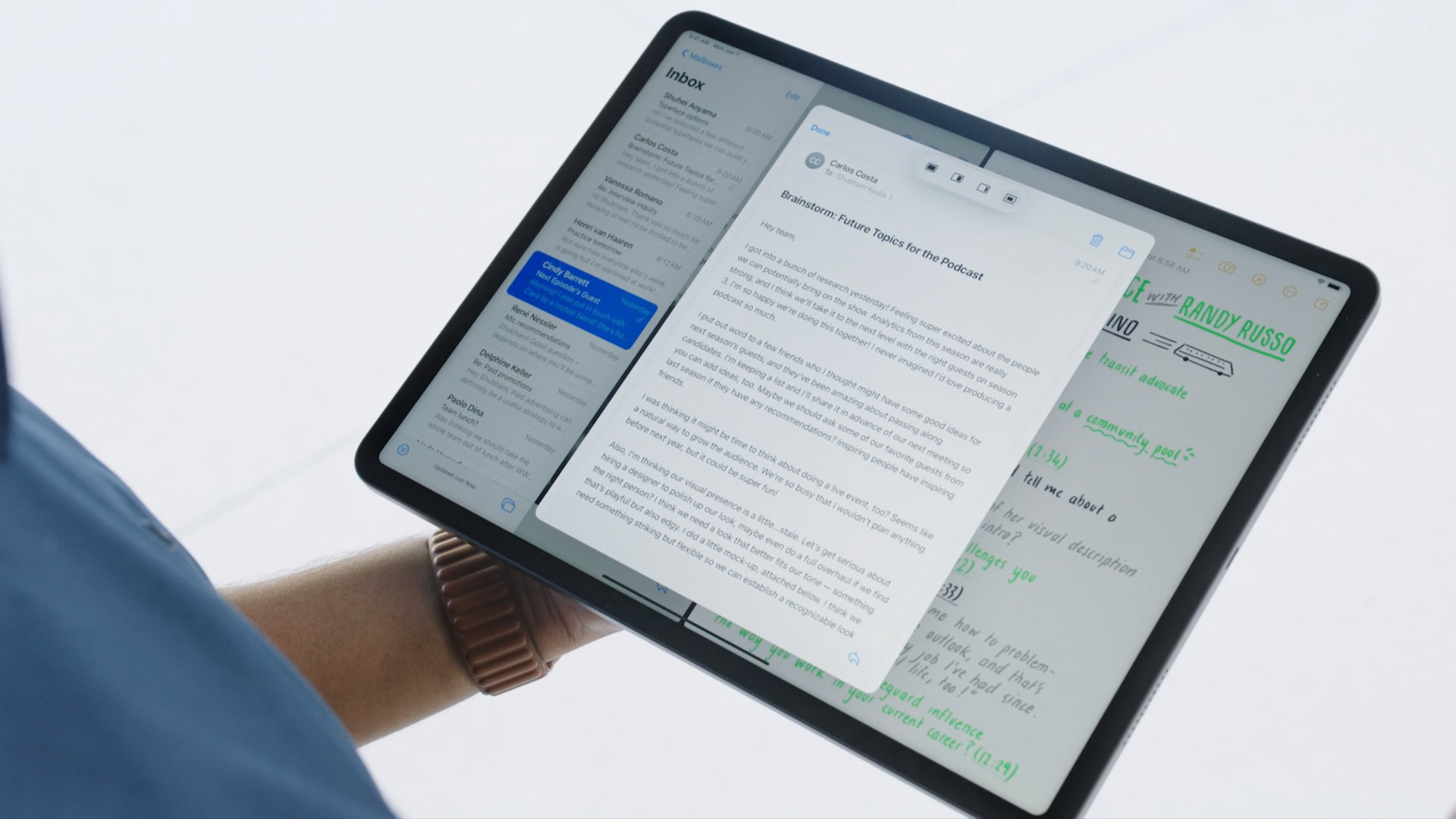
Multitasking: A new control appears at the top of apps that brings up the multitasking menu. It creates a split view or slide-over function. It now gives a quick view of the home screen so you can easily access home apps. This also makes it easier to switch which apps are working side by side. The shelf, which gives easy access to all open windows, will appear automatically. You can tap to switch between open Safari windows, for instance. Users can create split views by dragging apps over one another. While Android supports multi-window multitasking, Apple’s new tool certainly looks like it could come in handy.
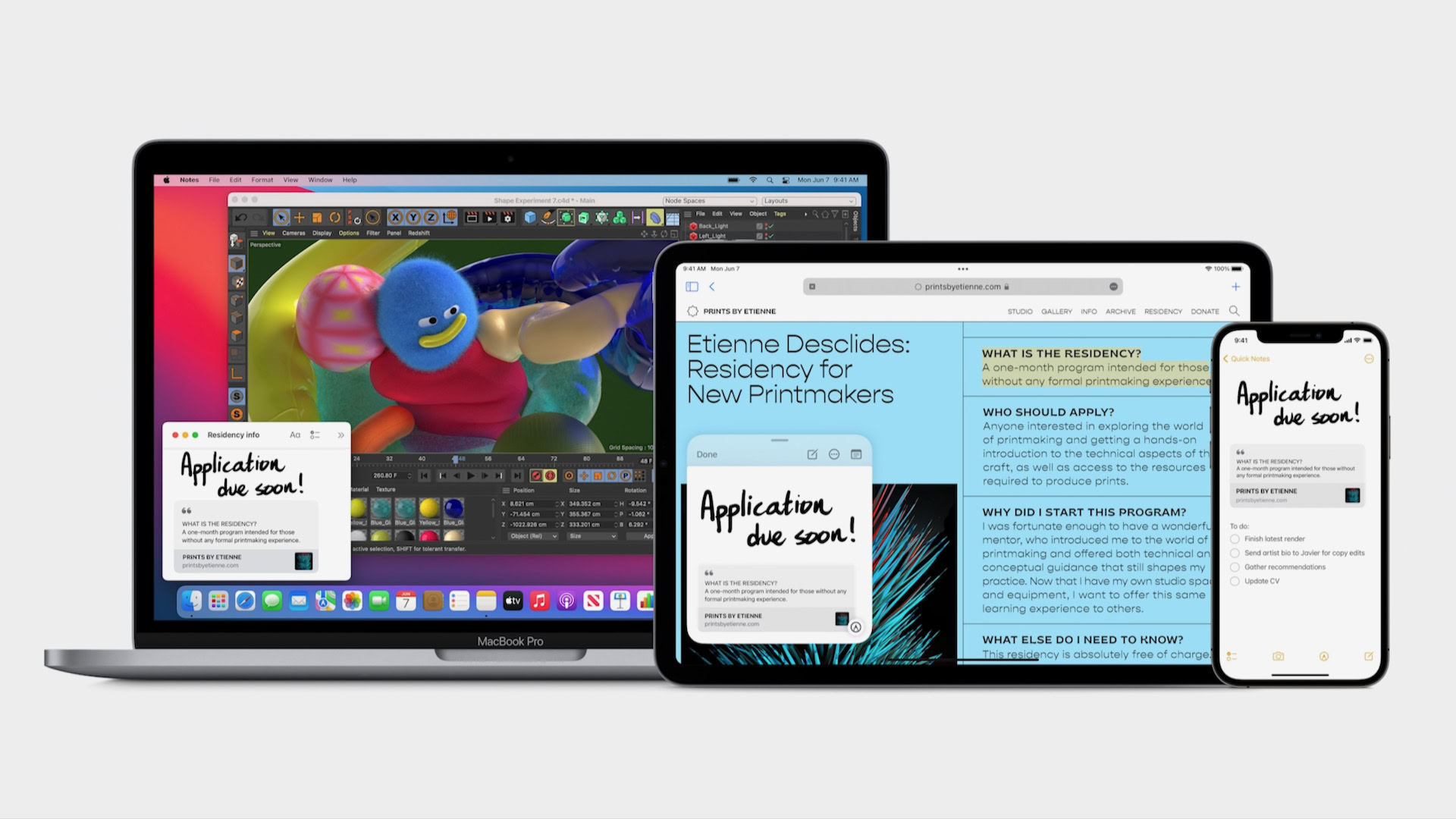
Quick Notes: This is a new and more powerful way to capture and organize information with notes. For example, you can mention a contact in a shared note and they’ll get a notification linking them back. There is also an activity view so people can see what’s changed within shared notes. Using Quick Notes is simple: swipe from the corner of the screen, and the note appears. You can swipe it away when done. Users will be able to easily add links from Quick Notes, too. All Quick Notes are available in the Notes app. This feature will be available on MacOS, iPadOS, as well as iOS. This should put Samsung and its S Pen stylus on notice.
Translate: Apple Translate comes to iPad and takes advantage of conversations, split view, and other tools. Auto translate detects when you’re speaking and can translate a conversation automatically in real-time between two people. Live Text can translate text into photos. Google Translate is a top-tier app, so this is another realm in which Apple is playing catch-up. Still, it’s good to see the company turning up the heat on Google.
Swift Playgrounds: This sounds like a great way to learn how to code based on lesson plans that are playful and fun. You can now build apps in Swift UI within Swift Playgrounds. If you’re new to app development, there’s a guide to help you create your first app. You can even submit apps to the App Store directly from the iPad.
Privacy
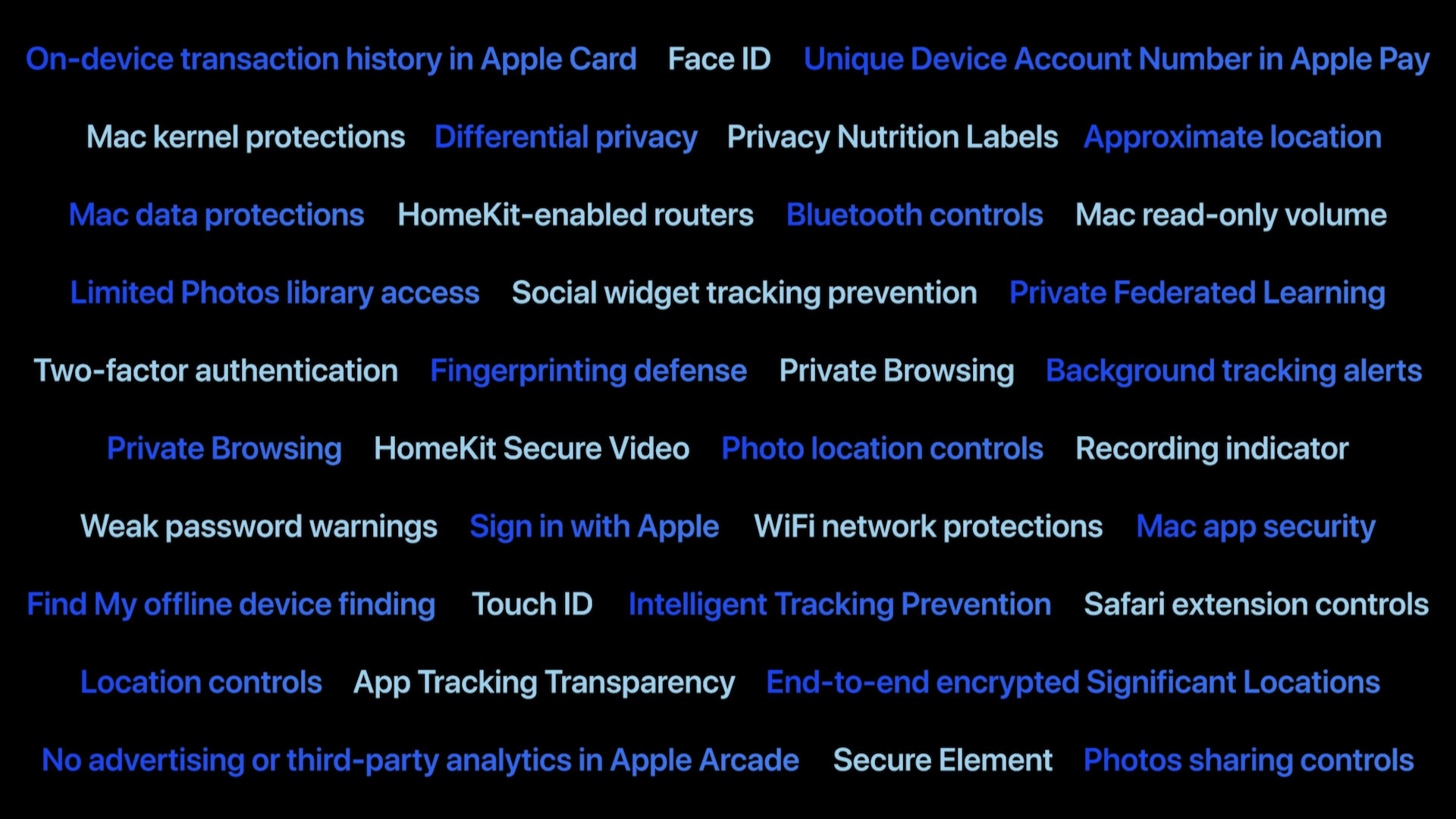
Apple also introduced many new privacy features to iOS 15 and iPadOS 15.
Mail: In the Mail app, Apple introduced mail privacy protection. Senders cannot see your IP address to link it to your activity or your location.
Safari: Safari is now even better at hiding your activity by blocking trackers. The new App Privacy Report gives you an overview of how apps treat your privacy. iPhone owners will be able to see how often apps access their details such as photos, contacts, the microphone, and more. iOS 15 users will be able to see all the third-party domains your apps are contacting.
Siri: Siri had been redesigned to process as much data on-device as possible. Audio now never leaves the device for voice assistants, which is something that users have wanted for a long time. iPhone owners can now make requests without an online connection. In contrast, Google Assistant has performed many calculations on-device for several years now.
iCloud
Believe it or not, iCloud got some love at Apple’s 2021 WWDC.
Account recovery: iOS users can now have the option to have people they trust on their recovery contact list. This means people can have a recovery code sent to another device so they can get back into their own iPhone or iPad.
Digital Legacy: This tool is for when you are dead. It allows iOS 15 owners to add people to their accounts as legacy contacts so their information can be accessed by family members if/when they become deceased.
iCloud Plus: This new service combines new features into existing tools. For example, Private Relay lets you browse with Safari in an even more secure way. It ensures traffic leaving your device is encrypted, and then all requests are sent through two separate internet relays so no one, not even Apple, can see what your browsing.
Hide My Email: You can share unique, random email addresses that will forward emails to your inbox. These are to hide your mail email account. You can then delete the fake email addresses at any time. This is a neat feature that Google needs to emulate.
Health
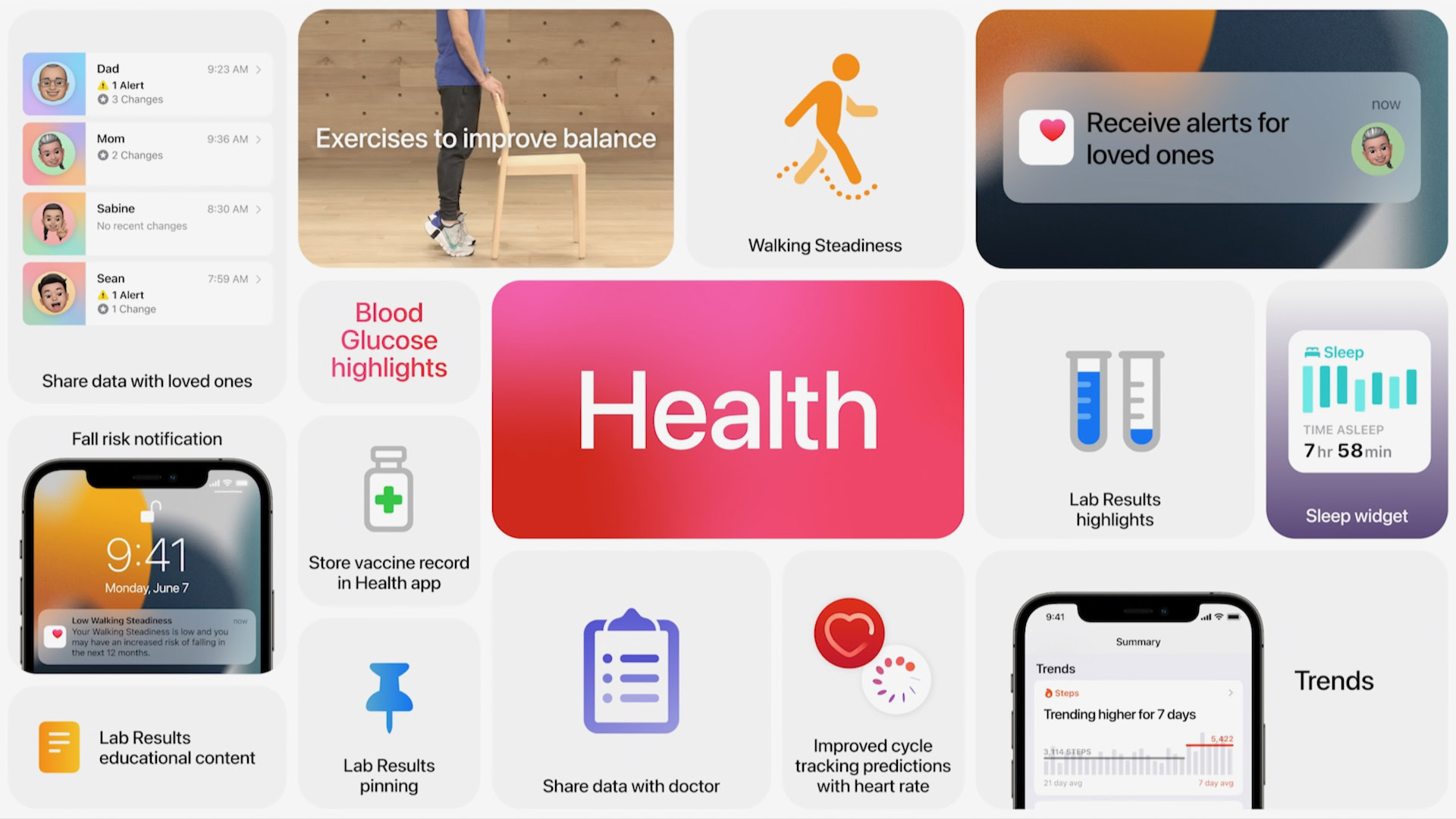
There are three new features to help identify and measure health changes.
Mobility: Fall risk is often assessed through a caretaker, but now Apple Health will use a new Walking Steadiness tool to assess the ability to walk steadily to prevent falls. Built-in sensors measure how fast a person walks, the timing of each step, how large their steps are, and so on. These provide metrics on balance and stability. It offers a classification of a person’s steadiness and how likely they are to fall. Beyond that, it suggests exercises to help people increase strength and balance.
Related: Your guide to Apple Health, Apple Fitness, and Apple Fitness Plus
Trends: Trends show changes in step count, heart rate, blood glucose, and other metrics. The data is then used to create graphs and charts that give a better picture of overall health.
Health Sharing: The health of family and loved ones matters, too. Health Sharing allows families to share their health data with trusted members. This helps people see trends and other details that might help catch things before they get out of hand. Everything is encrypted and given granular control to allow people to share what they are comfortable with.
Google has abandoned many of its health plans in the past. It remains to be seen if it will upgrade Android with features such as these seen in iOS.